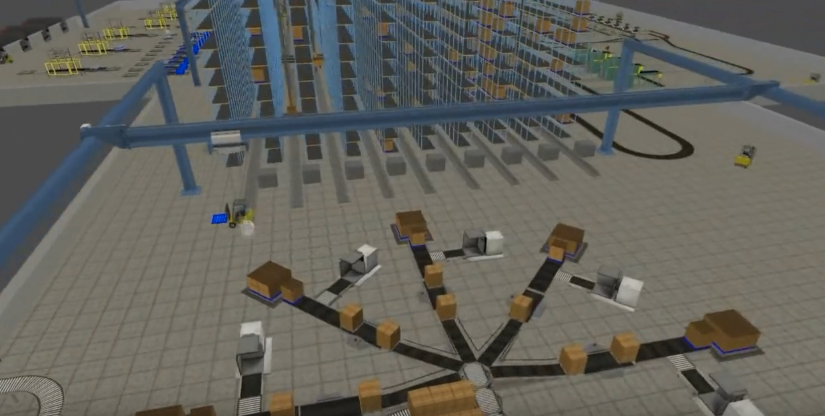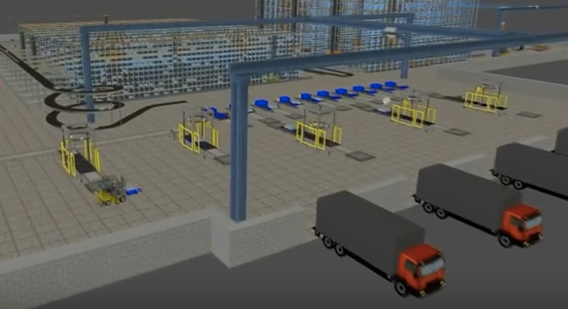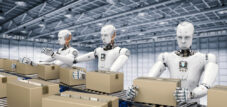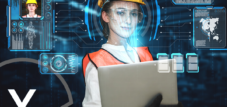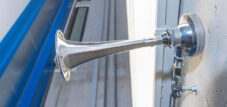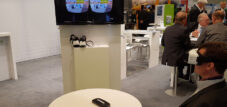3D simulation – for more process efficiency in the warehouse
Language selection 📢
Published on: 11th February 2016 / update from: November 26, 2018 - Author: Konrad Wolfenstein
As digitization increases, the days of hand-drawn or computer-generated sketches are finally numbered when planning new logistics systems. There are now a number of software tools with integrated 3D visualization technology that represent a cost-effective, flexible and, above all, quickly implementable alternative to conventional methods. With them, the client can clearly map and plan a wide variety of scenarios for the intended processes in three dimensions, regardless of location.
And the technology is not limited to the construction of buildings or their equipment for intralogistics: This means that even complex processes such as the internal flow of materials or the intralogistics processes of storing and retrieving goods can be reproduced true to the original.
A number of providers, such as Tarakos and Pro-Sim active in this area. They offer customers access to their software, which can be used to clearly visualize the planned project. The 3D simulation software offered for modeling processes makes it easier for decision-makers to quickly assess the influence of planned changes to optimize logistics or material flow.
This gives small and medium-sized companies in particular the opportunity to illustrate the processes between their systems and machines or in storage and conveyor technology using 3D objects without investing large amounts of money. The user can usually access a comprehensive selection of 3D objects provided by the provider and, if necessary, supplement them with their own motifs. This modular principle accelerates creation on the one hand and limits costs on the other.
With the software tool, a wide variety of logistics and production environments can be integrated into the visualization as required:
- Storage systems (from conventional standard storage to automated vertical lifts)
- Conveyor technology and systems, operated automatically or manually
- Vehicles such as forklifts, industrial trucks or driverless vehicles
- Transportation systems
- Storage and retrieval machines, shuttles etc.
- Staff and/or robots
Intuitive menu and user navigation makes creation even easier. The users are guided through the individual steps of the software in an easy-to-understand manner, so that the visualization can be created without too much prior knowledge.
Sufficient flexibility is ensured because the inserted 3D objects can be permanently adjusted using adjustable parameters. Whether device dimensions, room heights, special versions of the conveyor lines or the warehouse layout: they can be easily changed and the 3D visualization can be adapted to the new circumstances.
Changes in the material flow can also be effectively animated. To do this, the various storage locations, conveying speeds and cycle times are entered into the software and the desired distribution or branching strategies are selected. The paths and speed of employees and industrial trucks are determined in the same way. The program uses this information to calculate the expected throughput at individually selected locations. The entire process is depicted in real time, but can also be played in slow motion or fast motion. A good prerequisite for testing and clearly demonstrating the performance of the desired processes.
The advantages of such a standardized software solution are obvious:
- Simple 3D visualization of processes in logistics, material flow, factory planning
- Cost-effective, quick solution
- Great flexibility
- Low investment and qualification threshold
- Location-independent availability
In addition to the comparatively low purchase or rental costs of the software, it is particularly the uncomplicated implementation that makes such a system an interesting solution for potential customers.
Once the software has created such a digital system, the graphical installation of new machines becomes much easier for the customer. He can move the devices from place to place using drag and drop and adapt them to local conditions. In this way, incorrect developments, under- or over-dimensioning are noticed much more quickly and can be remedied immediately.
Planned optimizations of existing systems, such as the processes involved in transport routes and material flow, can also be identified more easily with 3D help. The routes of employees in the warehouse, timing in assembly or material flows between warehouse and production can also be better assessed.
The provider Tarakos even offers the viewer of its visualization a flying experience: a flight through the 3D animated scenarios can be shown, in which processes and spatial conditions can be shown from completely new, realistic perspectives. With the help of Oculus Rift 3D glasses, users can immerse themselves directly in the scenery. This provides the viewer with completely new insights into the processes and systems. This creates such a detailed view of events that was not even remotely conceivable in the days of good old two-dimensional sketches.



